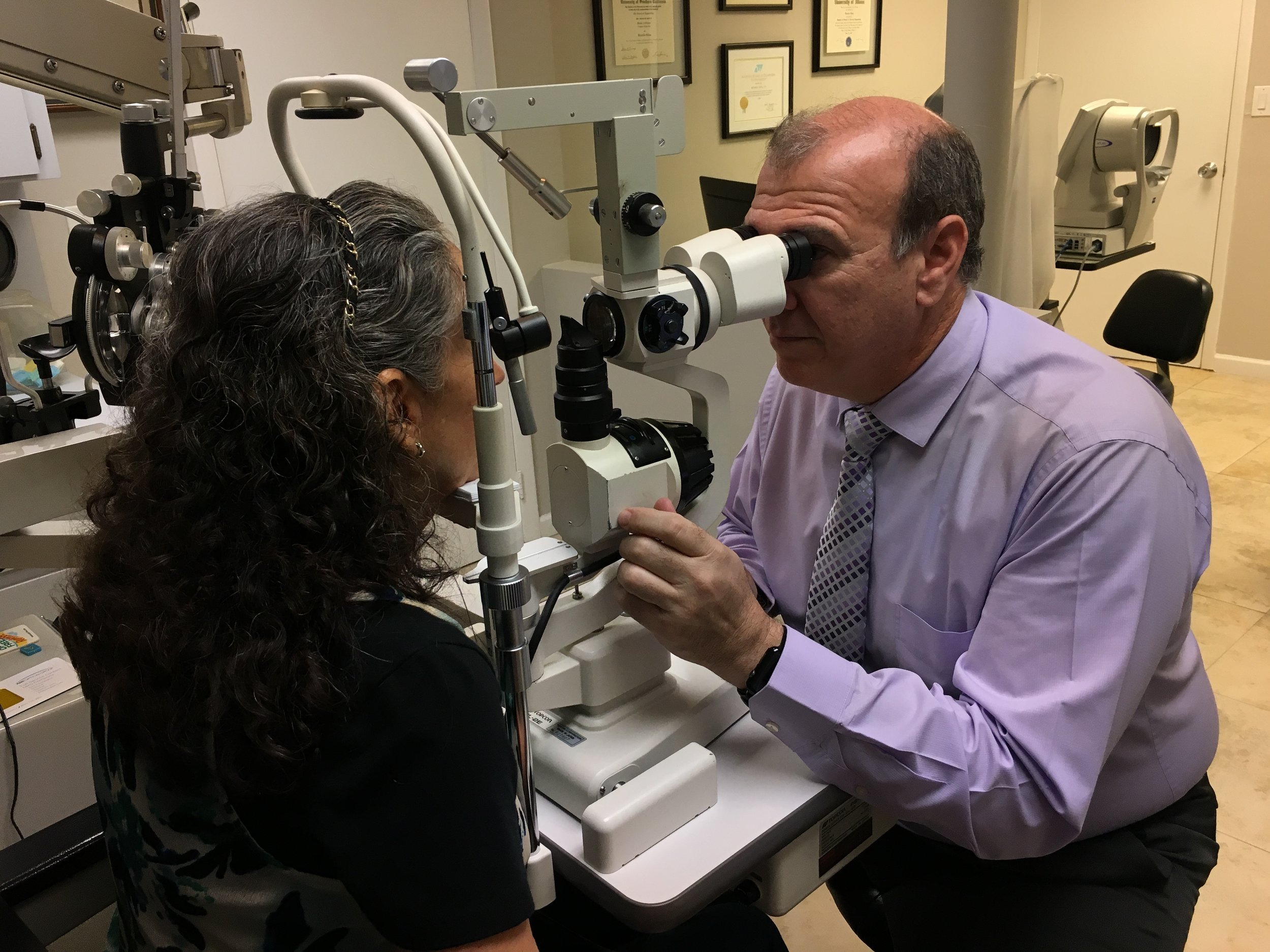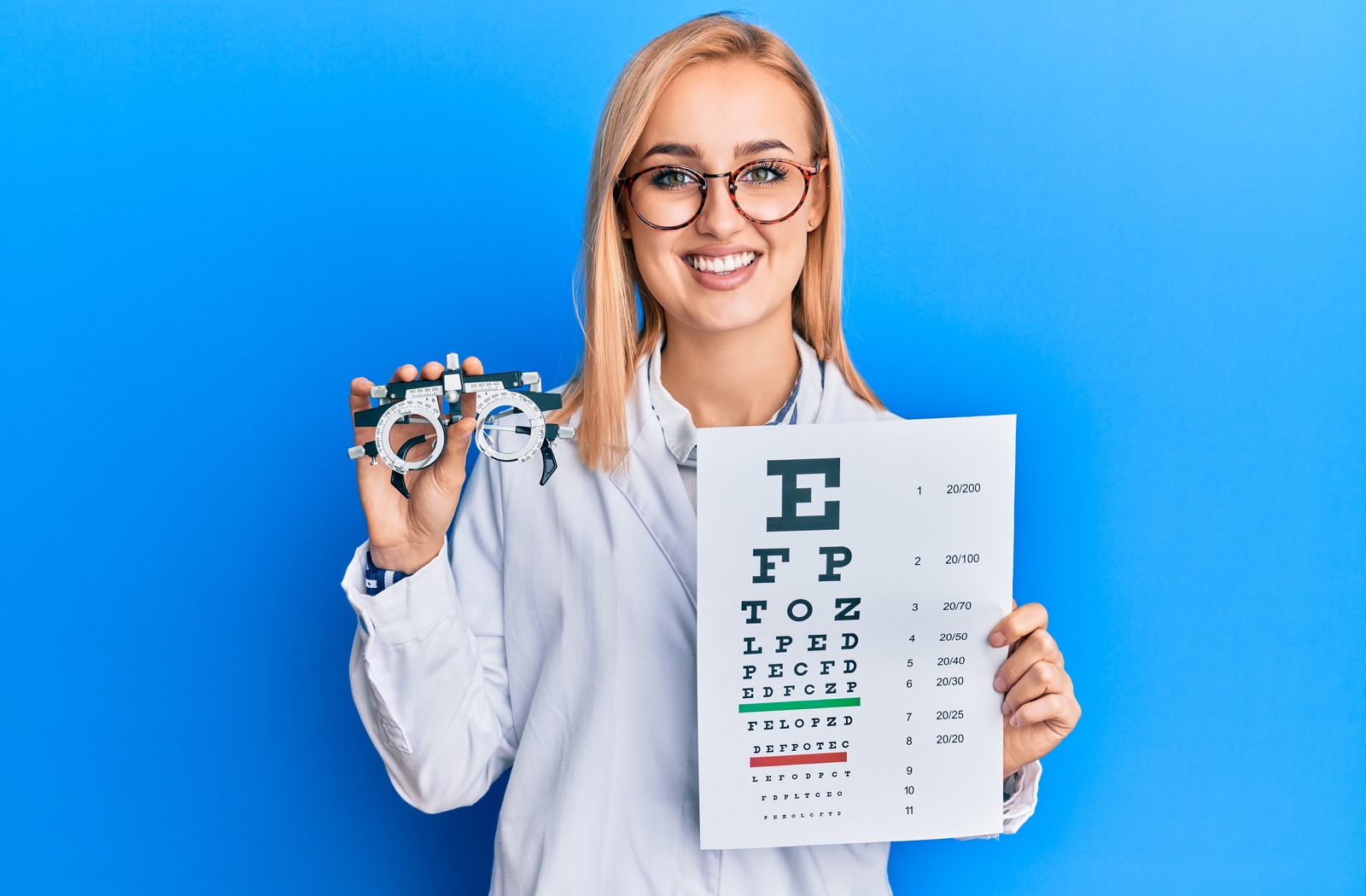Why Selecting an Eye Doctor Optometrist is Vital for Your Eyes
Why Selecting an Eye Doctor Optometrist is Vital for Your Eyes
Blog Article
Exploring the Newest Technological Advancements in Optometry and What They Mean for Eye Doctors
From the precision of Optical Coherence Tomography to the nuanced insights offered by AI-driven diagnostic tools, these technologies are setting new requirements in individual assessment and treatment. As these developments penetrate the method, eye doctors are faced with the obstacle of welcoming these devices to enhance client results.
Advancements in Diagnostic Devices
Progressing the field of optometry, innovations in diagnostic tools have reinvented the means eye care specialists evaluate and diagnose aesthetic disabilities and ocular conditions. The previous decade has seen considerable technical developments, allowing even more detailed and precise examinations. Optical Comprehensibility Tomography (OCT), for example, offers high-resolution cross-sectional pictures of the retina, permitting the very early discovery of conditions such as glaucoma and age-related macular deterioration. This non-invasive imaging method has actually become indispensable in contemporary optometric method.
An additional trick development is the intro of sophisticated corneal topography systems, which map the surface area curvature of the cornea with precision. These devices are especially advantageous for fitting get in touch with lenses and detecting corneal disorders. Digital retinal imaging has transformed traditional ophthalmoscopy, providing thorough, breathtaking views of the retina that facilitate extensive aesthetic exams.
The development of wavefront aberrometry has likewise been vital, enabling the analysis of refractive errors with unmatched accuracy (Opticore Optometry). This modern technology aids in tailoring rehabilitative lenses and boosting medical end results for refractive surgeries. Jointly, these analysis innovations encourage eye doctors to supply premium person treatment, ensuring very early treatment and customized treatment techniques, eventually improving visual health end results
AI in Person Administration
Structure on the foundation of sophisticated diagnostic devices, the consolidation of artificial knowledge (AI) in client administration stands for a transformative jump for optometry. AI systems are progressively used to improve efficiency, accuracy, and customization in client treatment.
Furthermore, AI-driven systems help with structured client communications and administrative procedures. Automated organizing, virtual appointments, and personalized follow-up strategies not just enhance client satisfaction but also maximize time management for professionals. These systems can triage patients based on the necessity of their problems, ensuring that those in important need get punctual focus.
Furthermore, AI improves decision-making by supplying optometrists with evidence-based suggestions and therapy paths. By incorporating information from electronic health records, AI tools use understandings that educate clinical decisions, decreasing the danger of mistakes and boosting person end results. As AI remains to evolve, its role in client administration will likely broaden, reshaping the landscape of optometric care.
Developments in Retinal Imaging
In the world of optometry, retinal imaging has actually experienced impressive technical innovations that are boosting analysis abilities and individual treatment. Developments such as Optical Coherence Tomography (OCT) and fundus photography have revolutionized how eye doctors examine the retina and envision. OCT, specifically, supplies high-resolution, cross-sectional photos of the retina, enabling the comprehensive click for more info assessment of its layers. This ability is indispensable for very early detection and administration of problems like glaucoma, diabetic retinopathy, and age-related macular degeneration.
Enhanced imaging techniques like OCT angiography are more refining diagnostic accuracy. Eye Doctor. Such innovations help with the identification of minute retinal adjustments that might signify illness development.
Furthermore, improvements in artificial intelligence are increasing retinal imaging by making it possible for automated evaluation of big datasets. These systems help eye doctors in identifying patterns a measure of pathology, thereby enhancing diagnostic precision and performance. Jointly, these innovations are transforming retinal imaging into a foundation of modern-day eye treatment, boosting end results and increasing therapeutic possibilities.
Teleoptometry's Growing Role
Teleoptometry is progressively ending up being an important element of eye care, driven by advancements in digital communication and diagnostic devices. This is especially helpful in country and underserved areas where access to specialized eye treatment is commonly restricted.
The integration of synthetic intelligence (AI) more improves teleoptometry, enabling the analysis of aesthetic information and aiding in the discovery of ocular conditions such as glaucoma and diabetic person retinopathy. AI-powered algorithms can swiftly analyze complicated imaging data, giving optometrists with useful insights that reinforce scientific decision-making.
Furthermore, teleoptometry supports connection of care with seamless assimilation with electronic wellness records (EHRs), enabling optometrists to keep extensive patient backgrounds. This makes certain that clients obtain consistent and customized treatment also when talking to different experts.
In spite of these advantages, difficulties continue to be, this consisting of guaranteeing information safety and managing client expectations. Teleoptometry stands for a significant stride towards more easily accessible, reliable, and patient-centered eye treatment. As modern technology advances, its role is poised to expand further.

Future Trends in Eye Care
A myriad of innovative trends is readied to reshape the future of eye treatment, driven by technical improvements and the advancing demands of people. One substantial pattern is the combination of synthetic intelligence (AI) in diagnostics, which promises to boost the accuracy and effectiveness of eye evaluations. AI algorithms can Check This Out assess substantial quantities of data from retinal images, possibly finding problems like diabetic retinopathy and glaucoma earlier than typical approaches.
Additionally, customized medicine is gaining grip in optometry, with genetic testing educating personalized treatment strategies. This strategy intends to enhance client results by customizing treatments to individual hereditary profiles. Wearable modern technology, such as wise contact lenses, is additionally on the horizon, supplying real-time tracking of intraocular stress or sugar levels, hence providing continuous insights into systemic and ocular wellness.
The fostering of increased reality (AR) and digital truth (VR) in training and patient education is another arising trend. These modern technologies supply immersive experiences that can improve understanding and skills both for people and optometrists. As these patterns develop, optometrists must stay abreast of technical advancements to offer advanced care, making certain better client results and satisfaction in the dynamic landscape of eye care.
Conclusion

Jointly, these analysis advancements equip optometrists to supply remarkable individual treatment, making sure very early intervention and tailored therapy approaches, eventually boosting visual health and wellness results.

As these innovations continue to evolve, eye doctors must adapt and integrate them into practice, inevitably maximizing workflow efficiency and boosting the criterion of eye care supplied to individuals.
Report this page